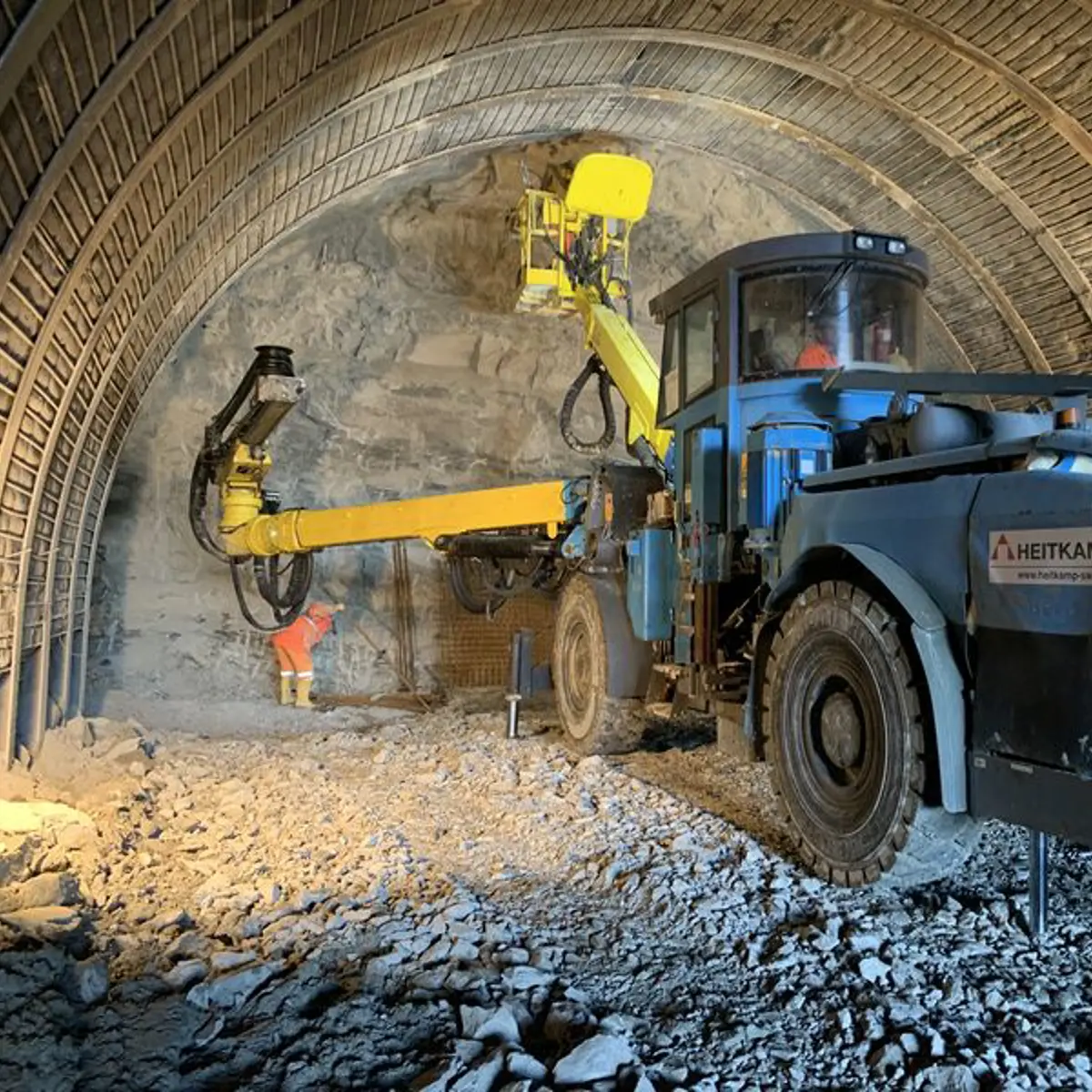Tunnelling
Mechanical tunnelling
Tunnel boring machines are particularly efficient when they can be used over longer distances and the geological conditions do not vary too greatly. In addition to efficiency, mechanical tunnel construction impresses with its high degree of automation.
This allows the tunnel to be secured with tubbings (prefabricated concrete segments) immediately after excavation, which in most cases also serve as the interior lining. Alternatively, in stable rock conditions, the tunnel can also be secured with shotcrete.

Conventional tunnelling
Blasting and excavation methods are usually used when the tunnel lengths are short or the rock conditions vary greatly. Conventional tunnel construction is very flexible and can be adapted to the conditions encountered at any time. In most cases, after securing the tunnel with shotcrete and anchors, an inner shell made of in-situ concrete is installed.

Railway engineering
As a specialist in railway technology, we completed the challenging Gotthard Base Tunnel railway project. Our core competence in this project was the construction of special track systems such as slab tracks and mass-spring systems. These systems are used wherever the rail network has to meet high and complex usage and construction requirements.







